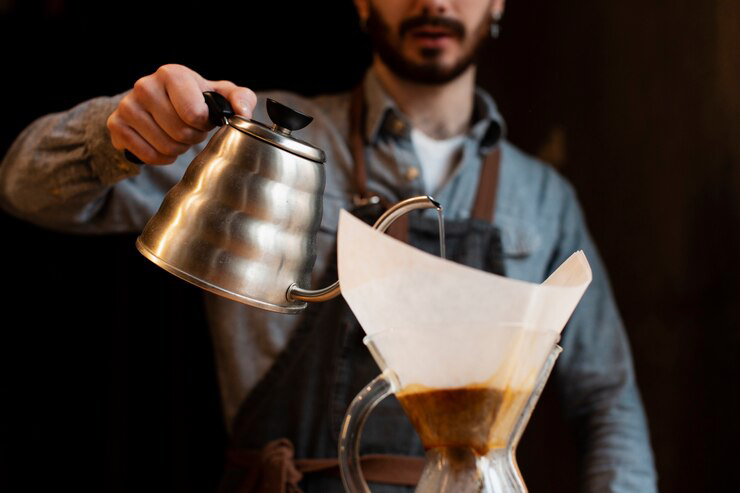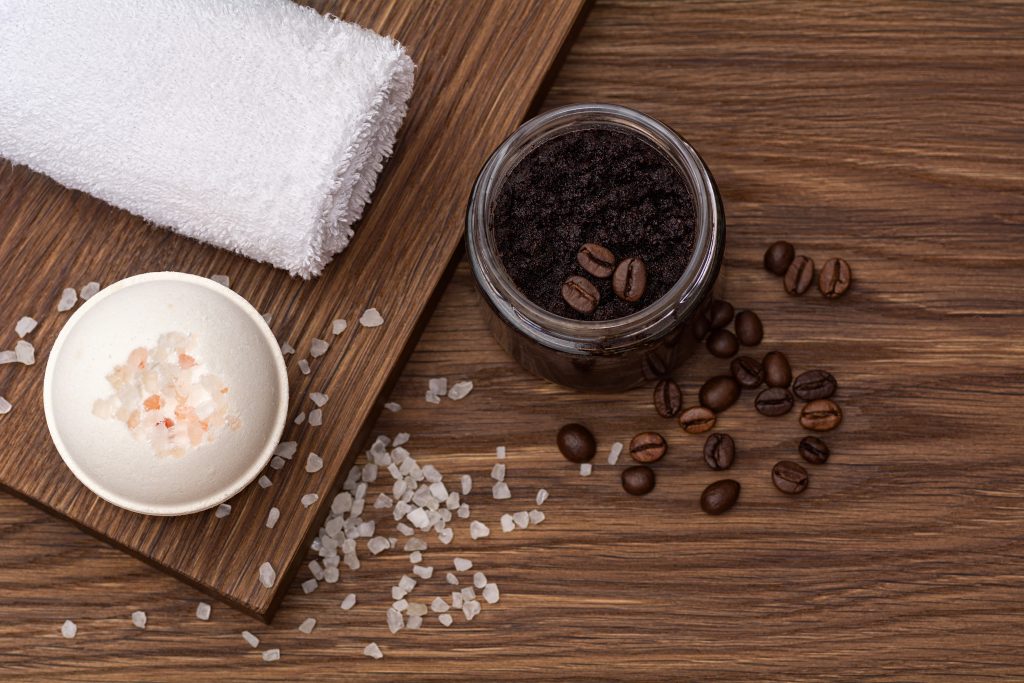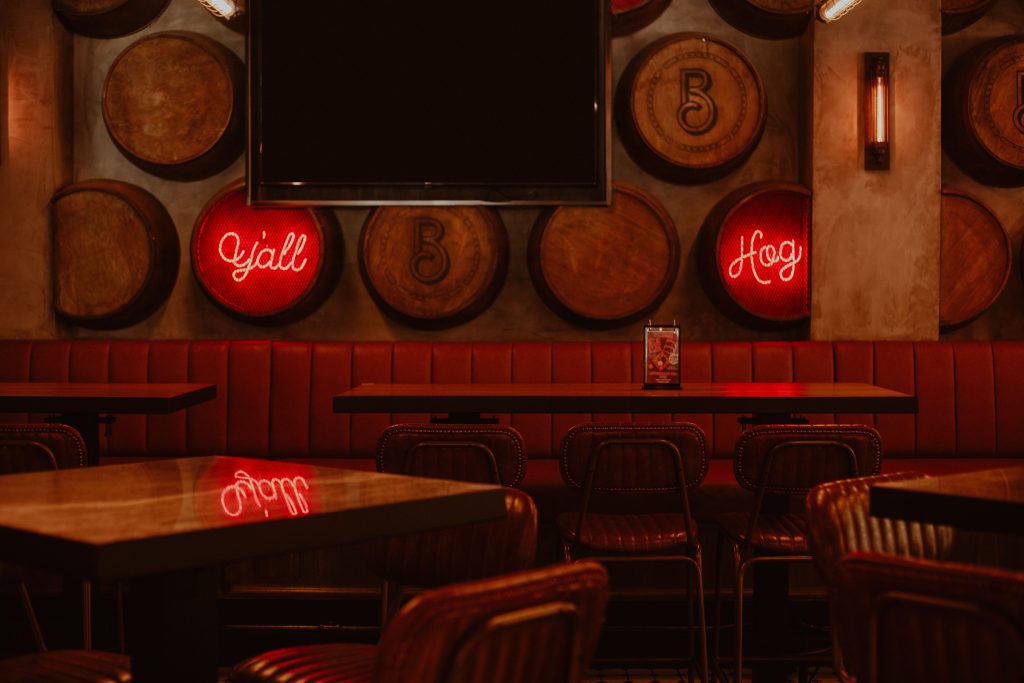Best Food Tours: A Culinary Journey Worth Taking
As a travel lover and dedicated food lover, I’ve long believed that the essence of any culture is found in its food. There’s something about local dishes that truly speaks to the heart of a destination, and I’ve savoured my fair share. I’ve also run (and had the great fortune of being led on) many food tours that travel to the world’s farthest reaches. I now share here my very best food tour experiences because I want you to visit these locations and enjoy what I consider some of the world’s most outstanding culinary adventures. Why Opt for a Food Tour? You may wonder why you should choose a culinary adventure rather than a meal at a fine restaurant. Here are several reasons that I think make food tours a superior choice: Authenticity: Food tours take you off the beaten path; you are served authentic food to the place you are visiting. Cultural Connection: Each dish tells a story. Local guides share fascinating and relatable insights about the history and culture behind their cuisine. Variety: Eating six dishes throughout a food tour is a great way to taste the breadth of a locality’s cuisine. Community: Nothing quite like sharing a meal with a small group of friendly strangers. What to Expect on a Food Tour Upon my first foray into the world of food tours, I was uncertain about what to anticipate. Here’s a framework for what one might experience: Local Guides: Most tours commence with a warm welcome from your guide, who will introduce themselves and engage your group with an intimate knowledge of the food and local area. Tasting Stops: This is part of the tour where you are encouraged to savour each bite. Expect a mix of across-the-board flavours that truly represent the local scene. With about six stops, I can guarantee that everywhere you go will blow your mind more than the last place. Cultural Insights: Yes, this is a food tour, but it’s also a cultural tour. Expect your guide to share fascinating stories about the ingredients, cooking methods, and traditions associated with your sampling dishes. Interactive Experiences: Depending on your guide and the nature of the tour, you might have some opportunities to get hands-on with your food through cooking demonstrations or other activities. Social Interaction: Another thing I love about food tours is how social they are. Chatting with fellow tour-goers makes for a lovely atmosphere on top of enjoying the best bites. My Favourite Food Tours Around the World Melbourne’s Laneway Food Tour: The vibrant food scene in Melbourne makes the hidden alleys throughout the city a delectable experience. My tour took me into some of these clandestine passages where I enjoyed artisanal coffee and dumplings that rival some of the best I’ve ever tasted. Multiculturalism spills into nearly every part of Melbourne, and the guide shared the city’s many gourmet secrets with us. Barcelona’s Tapas Tour: In Barcelona, I took part in a tapa tour of many local bars. Each stop had a different tapas type, ranging from patatas bravas to jamón ibérico. The atmosphere was vibrant, and I enjoyed hearing the stories behind each dish as I sipped a glass of local wine. It was an engaging evening of food, culture, and conviviality. Tokyo’s Street Food Adventure: I am a food lover, and Tokyo is a street food paradise. My street food tour was a highlight of the trip. Not only did I take advantage of the second session of a two-part food marathon, lunch and dinner, but I also savoured each of the following: warm takoyaki, moist and tender sweet mochi, the city’s energy, and the people’s friendliness. Tips for Choosing the Right Food Tour When choosing a food tour, think about this: Research: Seek out tours that have glowing reviews and knowledgeable guides. Websites like TripAdvisor and local travel blogs can point you in the right direction. Your Tummy: Make sure the tour fits your dietary needs. Most guides can tailor the experience to ensure everyone enjoys the food. Size Matters: Small groups usually allow better interaction with the guide and other participants. Time: How much do you want to spend eating? Some tours are a couple of hours long; others take half a day or more. Engaging with Food Tours Having taken a few food tours, I realized they are not merely about consuming food; they are intimate ways of connecting with the culture and the people who make and share amazing food. Here are some strategies for making the most of your food tour: Ask Questions: Don’t hold back. Engage with your guide and the locals. They often have a wealth of knowledge (and stories) that make the food you’re eating—and the people making it—all the more special. Take Notes: If you experience a dish you can’t stop thinking about, write it down. I promise you’ll forget names and recipes in the haze of post-tour excitement if you don’t. Share Your Experience: Chew on it briefly (pun intended). If you can’t tell the folks back home about your food tour, who can? Conclusion Exploring a new destination through its food is an enticing way to indulge in different culinary delights. Food tours are a unique method of connecting with the local culture. They provide unfettered access to meet new people in the warmest way possible, over food. Perhaps most importantly, each food tour is another tour de force of tasting delicious food. Whether you are winding your way through the alleyways of Melbourne or partaking in the Spanish tradition of tapas in Madrid, each tour you embark upon is another memory-making moment. The next time you plan a trip, think about including a food tour in your itinerary. You will do more than taste the food. You will experience the very essence of the culture. Have you ever been on a food tour that lingered in your memory? If so, please reply with your tales in the comments section.
Food Allergy Clinics: 5 Essential Steps to Finding the Right Care for Your Family

As a parent of a kid with food allergies, selecting appropriate care is one of the most crucial decisions you will encounter. The process may seem daunting, particularly when traversing the myriad of clinics, each asserting to provide the optimal treatment. It is not just about locating a facility that offers medical proficiency; it is about identifying a clinic that truly comprehends your family’s distinct issues. The appropriate Food Allergy Clinics will provide both efficacious medicines and the empathetic care you and your child deserve. What is the process for picking the most suitable food allergy clinic? It begins with comprehending your priorities and identifying what to seek. Every element is significant, from the allergists’ qualifications to the clinic’s treatment methodology and amenities. This selection pertains to convenience and safeguarding your child’s safety and well-being while fostering trust with the medical staff. If you feel disoriented, rest assured—you are not solitary. Numerous parents, myself included, have experienced this situation. I recall the ambiguity and the gravity of making such a significant decision. I am here to assist. This book presents five practical methods to assist you in locating a food allergy clinic that aligns with your family’s requirements, transforming a seemingly overwhelming undertaking into a manageable and fulfilling endeavour. Why Finding the Right Food Allergy Clinic Matters Before commencing the hunt, let us pause for reflection. What is the significance of locating a clinic that specialises in food allergies? Food allergies are inherently unpredictable, and the possibility of a catastrophic reaction is a risk no parent wishes to take. A food allergy clinic possesses specialised expertise, diagnostic tests, and therapies that may not be available through standard paediatricians or general practitioners. Indeed, certain food allergies are so intricate that only a facility with specialised experience can provide optimal care. Step 1: Start with Referrals – Trust the Experts One of the initial steps in your quest for the appropriate clinic is to solicit referrals. Commence by consulting your child’s paediatrician or allergist. These individuals are typically well-networked throughout the medical community and can offer significant recommendations to food allergy clinics. Additionally, you may seek assistance from fellow parents in online forums or local support groups. Oral endorsements frequently uncover concealed treasures in your vicinity. I recall when I initially sought a clinic for my child. At a local support group meeting, I conversed with several parents who recounted their stories, which really impacted me. Receiving firsthand accounts from individuals with similar experiences was both comforting and enlightening. Step 2: Look for Board-Certified Allergists Prioritise food allergy clinics that employ board-certified allergists. These specialists are equipped to manage intricate food allergy cases due to their comprehensive training in diagnosing and treating these illnesses. Enquire with the clinic about the allergists’ certifications and experience managing food allergies. Not all medical facilities employ nutritionists specialising in food allergies, despite many providing allergy testing services. Seek a specialist knowledgeable about allergies and their effects on your child’s health. It is advisable to routinely validate your qualification with the relevant authorities in your nation or the American Board of Allergy and Immunology. This ensures that the allergist under consideration possesses the requisite training and expertise. Step 3: Evaluate the Clinic’s Approach to Treatment When researching various food allergy clinics, consider their therapeutic approaches. Are they concentrating on the most efficacious medical treatments, such as oral immunotherapy (OIT) or other innovative therapies? Do they provide thorough allergy testing, including skin prick tests or blood tests, to accurately identify food triggers for reactions? After consulting multiple clinics, I recognised that the issue extended beyond merely locating a physician knowledgeable in the science of food allergies. The objective was to get a physician to comprehend my child’s allergy history thoroughly. Certain clinics provide personalised care programmes, encompassing strategies for emergency management, significantly enhancing our experience. Step 4: Consider the Clinic’s Facilities and Staff The atmosphere of a food allergy clinic must be comfortable and accommodating for families. Accommodating personnel can significantly alleviate worry and render the encounter as seamless as feasible. Contemplate the following enquiries: Are the clinic’s facilities hygienic and properly maintained? Is the personnel amiable, accessible, and supportive? Do they provide educational resources or assistance for families adapting to food allergies? A sympathetic and well-trained staff can render the entire procedure less daunting. I recall seeing significant improvement upon discovering a clinic that offered exceptional medical care and had a team that sincerely addressed our issues and collaborated with us throughout the process. Step 5: Check for Convenience and Insurance Coverage Convenience is paramount when balancing family responsibilities, professional obligations, and controlling your child’s allergies. Is the clinic readily accessible from your residence or place of employment? Do they provide flexible hours or telehealth services to suit your demanding schedule? Insurance coverage constitutes a critical element to evaluate. Food allergy testing and treatment might be expensive; thus, verify if your insurance will reimburse the expenses at a specific facility. Numerous clinics will offer a detailed account of services covered by insurance and collaborate with you to prevent unforeseen charges. What to Expect at a Food Allergy Clinic Upon locating the appropriate food allergy clinic, you may wonder what to anticipate during your appointments. The initial visit will often encompass a comprehensive review of your child’s medical history, including any prior allergic reactions. You will probably be required to submit records of previous allergy tests, if accessible. After that, the allergist may suggest a set of tests to verify any food sensitivities. This may encompass blood testing, skin prick tests, or, in certain instances, oral meal challenges. Based on the severity of the allergy, treatment options, including immunotherapy or emergency action plans, may be considered. Essential Enquiries to Make During a Clinic Visit Before selecting a clinic, be sure to enquire about the following questions to ascertain their suitability: What is your methodology for diagnosing and treating food allergies? Do you provide emergency action plans and guidelines for managing reactions? What treatment alternatives do you provide
Keto Diet Meal Kits: 5 Amazing Benefits for a Healthier You

Keto Diet Meal Kits are pre-portioned, ready-to-cook meal packages for those following a ketogenic diet. They simplify meal preparation by providing keto-friendly ingredients and recipes, ensuring balanced nutrition while helping you maintain ketosis. Introduction: It can feel like you’re lost in a labyrinth at times, trying to stick to a ketogenic diet. However, imagine there was a method to streamline your trip and make it more pleasurable. Introducing Keto Diet Meal Kits—the ultimate companion for your journey towards a low-carb lifestyle. In this piece, I will discuss these meal packages’ five most significant advantages. These kits are made to help you live a better life in every way possible, from making meal planning easier to reaching your weight reduction objectives. Are you all set to get right in? How may these meal packages revolutionise your keto journey? Let’s find out! Simplified Meal Planning: A Game Changer for Busy Lives Imagine yourself waking up to a week’s worth of carefully prepared meals brought to your doorstep. This is just a dream. It is now within reach, thanks to Keto Diet Meal Kits. By including pre-measured ingredients and simple recipes, these kits remove the guesswork from meal planning. Find keto-friendly options with ease and stop stressing over macro balancing. Accuracy is key while following a ketogenic diet. Each meal kit is carefully designed to allow you to eat tasty, filling meals without going over your daily carb limit. That way, you won’t have to worry about having enough food for every meal, freeing you to focus on other aspects of your life, like getting through a long workweek or spending time with loved ones. Weight Loss Support: A Convenient Ally in Your Fitness Journey Maintaining motivation is a major obstacle to weight reduction and any diet programme. Your hidden weapon in this fight could be a keto Diet Meal Kit. These meal plans are in perfect harmony with the principles of ketosis, which involve reducing carbs and increasing healthy fats. They will assist you in reaching and staying in ketosis, a metabolic state in which your body uses fat for energy. If you eat these meals regularly, you won’t have to worry about snacking between meals or giving in to unhealthy urges. Plus, when you have everything you need already prepared, you won’t have to worry about snacking on bad foods or ordering takeout as often. It’s as if your kitchen had its very own nutritionist! Nutritional Balance: Perfectly Portioned for Optimal Health Have you ever wanted to know how to ensure the ketogenic diet provides you with the correct nutrients? You might be surprised at how simple it is to use keto diet meal kits. Nutritionists who know what people need will assemble these kits to meet your dietary requirements. In addition to the macronutrient ratios, they factor in the critical micronutrients for good health. Picture getting a personalised diet plan sent to your door. You won’t have to worry about nutrient imbalances or deficiencies because every meal is carefully planned to contain the correct amount of vitamins, minerals, and other nutrients. It’s as if your body had its own personal chef who could cater to all of your nutritional demands! Variety and Flavour: Never Get Bored with Your Meals A major obstacle to maintaining a diet is the boredom of repeatedly eating the same things. You may rely on keto diet meal kits to save the day with their extensive recipe library. You can keep your eating experience interesting with these kits, which include various flavours and textures, from savoury meat-based recipes to creamy avocado dishes. In a perfect world, you wouldn’t have to eat the same boring food every day. If you want to maintain your keto diet commitment without experiencing hunger pangs or monotony, these packages are for you. Time-Saving Convenience: More Time for What Matters The truth is that nobody wants to waste their valuable time on meal preparation. Delivered to your door, pre-portioned ingredients and easy recipes make Keto Diet Meal Kits a time saver. Easy, fast, and tasty dinners without the hassle of grocery shopping, chopping, or measuring. Consider all the time you’ll acquire by doing this! Instead of spending hours planning and cooking meals, you can do more enjoyable things or just relax. Enjoy quick meal prep without sacrificing taste or nutrition with Keto Diet Meal Kits. In summary There are many ways in which keto diet meal kits can improve your ketogenic journey, from the start to the finish. These kits are made to help you live a healthier, happier life by streamlining meal planning, giving you nutritional balance, and saving you time. If you’re seeking an easy and tasty method to maintain your ketogenic diet, why not try these meal kits? Who knows? They could be your go-to cooking utensils.
Brewing Bliss: Aromatherapy Unveiled through the Scent Symphony of Coffee Beans

Welcome to the aromatic realm of “Brewing Bliss: Aromatherapy Unveiled through the Scent Symphony of Coffee Beans.” In this exploration, we embark on a captivating journey through the intricate world of coffee aromas, discovering the therapeutic potential hidden within the simple act of brewing our daily cup of coffee. As a seasoned culinary and food expert, I am thrilled to guide you through the olfactory ballet of coffee beans, unraveling the complexities and burstiness of scents that transform a mundane coffee routine into a symphony of bliss. As we delve into the diverse aromas of various coffee beans, we’ll decode the science behind aromatherapy, understanding how the brewing process becomes a transformative experience for the senses. Roasting and grinding, those crucial steps in crafting our daily elixir will be explored as dynamic elements in the dance of aromas—a burst of fragrance that heightens the sensory pleasure. From the bold adventure of dark roasts to the artistry of specialty blends, we’ll traverse the aromatic landscapes, drawing analogies that resonate with both the connoisseur and the casual coffee lover. Join me in this exploration, where every sip becomes a moment of serenity, and the scents of coffee beans compose a symphony of delight. Welcome to the world of Brewing Bliss—a journey into the therapeutic essence of coffee’s aromatic symphony. The Symphony Begins: Exploring Coffee Bean Aromas Picture this: you’re in a coffee haven, surrounded by an array of coffee beans from different corners of the world. Each variety whispers its own story through its unique scent. The earthiness of Indonesian beans, the fruity notes of Ethiopian varieties, and the nutty aroma of Brazilian coffee compose a symphony that prepares your senses for the blissful journey ahead. As I delve into the aromatic profiles, I can’t help but marvel at the complexity. It’s like attending a concert where every instrument, or in this case, every coffee bean, has its solo, contributing to the harmony of the ensemble. It’s not just about brewing coffee; it’s about experiencing a sensory masterpiece. The Science of Aromatherapy in Coffee: Unlocking the Senses Now, let’s demystify the science behind this aromatic enchantment. When we brew coffee, we unleash many aromatic compounds, each with its own story. The active voice in this symphony is you, the brewer, orchestrating a sensory experience beyond the realms of taste and touch. The scent of coffee can elevate your mood, transporting you to a place of comfort and delight. Think of it as your aromatherapy session, where the steam rising from your cup is not just warmth—it’s a fragrant cloud of relaxation. The burstiness of these scents is like opening a treasure chest, revealing layers of aromatic richness that can turn a mundane morning into a moment of indulgent joy. Roasting and Grinding: Aromatherapy in Action As we move through the coffee-making process, we encounter the artists behind the scenes: the roasters and grinders. Picture the roasting process as a dance where the beans twirl in the heat, releasing their hidden scents. Conversely, grinding is like the percussion section, breaking down the beans and intensifying the aromas. It’s a burst of fragrance, a crescendo in the symphony of brewing bliss. The burstiness of aromas during roasting and grinding is akin to the anticipation before the climax of a great story. You can almost feel the excitement building, and when you take that first whiff, it’s like turning the page to a plot twist that leaves you craving more. Dark Roasts: A Bold Aromatherapy Adventure Now, let’s step into the world of dark roasts—a bold and intense chapter in our aromatic journey. The robust scents of dark roast coffee beans are not for the faint-hearted. It’s a daring adventure, a thrilling rollercoaster for your senses. Imagine the aroma as the opening scene of a blockbuster movie, setting the tone for the dramatic experience that follows. As you inhale the rich, smoky notes, you’re not just sipping coffee but immersing yourself in a sensory story of depth and complexity. The boldness of these aromas isn’t just a flavor preference; it’s a bold declaration that your coffee ritual is a moment of personal indulgence and intensity. Specialty Blends: Crafting Aromatherapy Elixirs Now, let’s talk about the artistry of creating specialty coffee blends. It’s like being in the studio with a masterful composer, selecting and combining different notes to create a symphony that resonates uniquely with you. The perplexity of aromas in specialty blends is like a finely tuned melody where every bean plays its part, contributing to a harmonious and multifaceted olfactory experience. Crafting a specialty blend is more than combining beans; it’s curating an aromatic journey. It’s the difference between listening to a single instrument and being immersed in a full orchestra. The burstiness and complexity of aromas in these blends elevate your coffee experience to an art form. Incorporating Aromatherapy into Daily Coffee Rituals Now that we’ve explored the wonders of coffee aromas let’s talk about incorporating this aromatic bliss into your daily coffee rituals. It’s not about rushing through the motions but savoring every step. As you grind the beans, take a moment to inhale deeply, allowing the burstiness of scents to awaken your senses. During the brewing process, let the aroma fill your space, transforming it into a sanctuary of calm. The therapeutic potential of aromatherapy lies not just in the scents themselves but in the mindfulness of the experience. It’s a moment of self-care, a daily ritual beyond the caffeine boost—a moment of brewing bliss. Conclusion: Brewing Bliss in Every Sip In concluding our aromatic expedition through “Brewing Bliss: Aromatherapy Unveiled through the Scent Symphony of Coffee Beans,” I extend my heartfelt gratitude for joining me on this sensory odyssey. Together, we’ve uncovered the therapeutic potential inherent in the simple yet profound act of brewing coffee—a daily ritual transformed into a symphony of scents. As we reflect on the diverse aromas of different coffee beans, it becomes evident that each cup is more than a beverage; it’s a sensory journey.
Coffee Aroma Therapy: Exploring the Scents of Different Coffee Beans

Who can resist the heavenly scent of freshly brewed coffee? Its scent can transport you to a world of comfort and warmth. But have you ever wondered what gives each cup its unique fragrance? It’s like a warm cup hug that instantly brightens your day. But have you ever wondered what makes each cup so unique and flavorful? Well, get ready to join us on a fun and fragrant adventure as we explore the world of coffee aromas. We’ll delve into what makes each bean special and learn more about the secrets brewing within each cup. The Essence of Aroma Therapy What Exactly is Aroma Therapy, and How Does it Work? Aroma Therapy, often referred to as aromatherapy, is a holistic healing approach that utilizes the aromatic compounds of plants, including essential oils, to promote physical and psychological well-being. But how does it work its magic? Aroma Therapy operates on the principle that when we inhale specific fragrances, the scent molecules travel to the olfactory receptors in our nose, sending signals to the brain’s limbic system, the emotional control center. This interaction can trigger various responses, such as relaxation, mood enhancement, and pain relief. It’s like a fragrant symphony playing with our emotions. So, How Does Coffee Fit into Aroma Therapy? You might wonder, “Where does coffee come into the picture?” Well, the aromatic journey of coffee is a perfect match for Aroma Therapy. The scents that coffee beans emanate can influence our mood and well-being. From the first whiff of ground coffee in the morning to the soothing aroma of a freshly brewed cup, coffee plays a significant role in our daily lives. But what makes each coffee experience unique? The Coffee Aromas by Bean Type Arabica vs. Robusta Coffee lovers often debate between Arabica and Robusta beans. These two bean types have distinct aroma profiles, each with its charm. The Aroma Profile of Arabica Beans Arabica beans are known for their elegance and aromas. These beans typically offer a milder, more complex fragrance than their Robusta counterparts. The aromas of Arabica beans can range from floral and fruity to nutty and slightly spicy. Imagine inhaling the scent of a blooming garden while sipping your coffee—that’s Arabica. The Aroma Profile of Robusta Beans It’s worth noting that Robusta beans are truly impressive. Their aroma is incredibly strong and can boast earthy, woody, and smoky notes that are hard to miss. Although some may find Robusta’s fragrance a bit overpowering, it still has a magnetic appeal, particularly for those who prefer coffee with a bold and daring flavor. Roasting: Transforming Aromas through Heat The journey of coffee aromas doesn’t end with the bean type. Roasting, a crucial step in coffee production, profoundly impacts the scents released by the beans. Light Roast: A Delicate Aroma Dance Lightly roasted coffee beans retain much of their original flavor and aroma. When brewed, they emanate a fragrance often described as bright, floral, and tea-like. These beans are a favorite among those who value the nuanced subtleties of coffee aromas. Medium Roast: Striking the Aroma-Fullness Balance Medium roast coffee beans strike a balance between aroma and flavor. The aroma profile here tends to be more balanced, with hints of the original bean’s characteristics and the caramelized notes from the roasting process. Dark Roast: The Aroma of Boldness Dark roasted beans, on the other hand, take on a more robust and smokier aroma. The original bean’s nuances are often overshadowed by the powerful scent of the dark roast, making it an acquired taste for those who prefer their coffee on the bold side. Aroma Therapy with Coffee: Elevating Your Senses Harnessing the Power of Coffee Aromatherapy Now that we’ve explored coffee’s aromatic nuances let’s dive into how coffee aromatherapy can elevate your senses and enhance your well-being. Stress Reduction: Inhaling the soothing aroma of coffee can be a quick ticket to stress reduction. The familiar scent is comforting, helping you unwind after a long day. Did you know? The scent of coffee has been studied for its potential to reduce the effects of sleep deprivation and stress. So, keep that coffee bean jar handy! Mood Enhancement: The aroma of coffee can elevate your mood. It can trigger the release of dopamine, the “feel-good” hormone, instantly making you feel happier. Pro tip: Take a moment in the morning to deeply inhale the aroma of your coffee before that first sip. It’s like a mini mood-boosting ritual! Enhanced Focus and Alertness: Need a mental kickstart? The fragrance of coffee can enhance mental alertness and focus. It’s no wonder many use it as their go-to scent for productivity. Try this: Place a small bowl of coffee beans on your desk, and whenever you feel your concentration waning, take a moment to savor the aroma. Appetite Suppression: Surprisingly, the scent of coffee can curb your appetite. If you’re watching your calorie intake, a whiff of coffee might be your secret weapon. Fun fact: Some weight loss programs recommend inhaling coffee aroma to reduce cravings. Give it a shot during your next snack dilemma! Headache Relief: For some, inhaling the comforting aroma of coffee can alleviate headaches. It’s worth a try if you’re looking for natural remedies. According to science: The aroma of coffee may relax blood vessels and reduce tension, which can be beneficial for headache relief. Comfort and Nostalgia: For many, the aroma of coffee is associated with warm, comforting moments and fond memories. It’s like a fragrant hug from the past. Try this: Brew a coffee using a blend that reminds you of a cherished memory. Let the aroma transport you back in time. As we conclude, we’ve been exploring the scents of different coffee beans. It’s amazing how much aroma is hidden inside each type of bean. Whether you prefer Arabica’s elegance or Robusta’s boldness, each has its unique transformation when roasted. Next time you have a cup of coffee, take a moment to enjoy the aroma. Let it fill your senses and transport you
What Makes a Bistro Restaurant So Special? Here’s the Inside Scoop!

Have you ever strolled down a quaint street, lured by the tantalizing aroma of delectable dishes, and found yourself enchanted by the cozy ambiance of a bistro? If so, you’re not alone. Bistros have been an integral part of European culinary culture for centuries, but their charm has transcended borders and captured the hearts of food enthusiasts worldwide. In this comprehensive guide, we’ll take you on a delightful journey through the enchanting world of bistro restaurants, exploring their origin, unique characteristics, mouthwatering cuisine, and more. So, without further ado, let’s dive in! What is a Bistro Restaurant? A bistro restaurant, often called a “bistro,” is a small and cozy eatery that typically serves simple, delicious, and hearty dishes in a relaxed and pleasant atmosphere. This term has its roots in French culture, where the word “bistro” was derived from the Russian word “bystro,” meaning “quickly.” This etymology perfectly encapsulates the essence of a bistro – a place where patrons can enjoy satisfying meals swiftly without compromising on quality or ambiance. The concept of bistro restaurants can be traced back to the early 19th century in Paris, France. These charming establishments originally started as modest watering holes that offered a selection of affordable wines and spirits to workers, artists, and passersby. Over time, they evolved into delightful eateries, extending their menus to include comforting, home-style dishes that became an instant hit among locals. The Enchanting Characteristics of Bistros Bistros are renowned for their unique and endearing characteristics that set them apart from other dining establishments. Let’s explore some of these enchanting features: Intimate Ambiance: Bistros exude a warm and welcoming atmosphere, often adorned with rustic décor, dim lighting, and wooden furniture, creating an intimate space perfect for romantic dinners or friendly gatherings. Limited Seating: Unlike large restaurants, bistros usually have limited seating, allowing for a more personalized experience and fostering a sense of camaraderie between diners. Open Kitchen: Many bistros boast an open kitchen layout, allowing guests to witness the culinary magic as skilled chefs prepare their meals with passion and flair. Handwritten Menus: Adding a touch of old-world charm, some bistros present their daily changing menus on chalkboards or handwritten cards, showcasing the freshest and most seasonal ingredients. Culinary Simplicity: Bistros pride themselves on simplicity, serving dishes prepared with locally sourced, fresh ingredients that shine through with their natural flavors. Fusion of Flavors: Bistros often embrace culinary influences from various regions, resulting in delightful fusion dishes that appeal to diverse palates. Personalized Service: A bistro’s attentive and friendly service ensures that guests feel right at home, enhancing the overall dining experience. The Delectable Cuisine of Bistros The culinary offerings of a bistro are nothing short of a gastronomic delight. These charming eateries feature diverse dishes, each bursting with flavor and prepared with love and care. Let’s explore some iconic dishes commonly found in bistro menus: Coq au Vin A true culinary masterpiece, Coq au Vin is a classic French dish that tantalizes taste buds with its heavenly combination of tender chicken braised in red wine. The succulent meat is complemented by luscious vegetables and aromatic herbs, creating a symphony of rich, velvety flavors in every bite. The slow-cooked preparation ensures that the essence of the red wine infuses into every morsel, making it an unforgettable dining experience. Beef Bourguignon Beef Bourguignon is another gem from the French culinary repertoire, a dish that exudes comfort and indulgence. Succulent beef is stewed in red wine, creating a sumptuous medley of flavors that melt in your mouth. With pearl onions, mushrooms, and bacon, this dish elevates bistro dining to new heights, making it a must-try for any food enthusiast. Ratatouille Ratatouille is made famous by an animated movie, bringing vibrant colors and fresh flavors to the bistro table. This vegetable medley showcases a harmonious blend of tomatoes, zucchini, eggplant, and bell peppers, cooked to perfection and seasoned with fragrant herbs. With each spoonful, diners are transported to the heart of bistro culinary artistry. Escargot Escargot is a delightful delicacy for adventurous gourmands that takes center stage on bistro menus. Tender snails are cooked in garlic butter, offering a unique and irresistible taste experience. While some may approach it with curiosity, the flavor profile of escargot often surprises and delights those willing to embrace this culinary adventure. Croque-Monsieur A classic French creation, the Croque-Monsieur is a mouthwatering ham and cheese sandwich elevated to new heights of decadence. With the addition of creamy béchamel sauce and a generous layer of melted cheese, every bite becomes an explosion of flavors. The perfect comfort food for any bistro enthusiast. Quiche Lorraine Nestled in a buttery, flaky crust, Quiche Lorraine is a savory pie with a delectable mixture of eggs, cheese, and bacon or ham. Its rich and creamy texture, combined with the savory goodness of the fillings, makes it a beloved dish on bistro menus. French Onion Soup On a chilly evening, nothing warms the soul like a bowl of French Onion Soup. A rich broth laden with caramelized onions is topped with toasted bread and a generous layer of melted cheese. This soul-soothing delight is a staple on bistro menus, offering comfort and satisfaction with every spoonful. Steak Frites As the epitome of bistro simplicity, Steak Frites offers a satisfying and hearty meal that never disappoints. A succulent steak is served alongside golden, crispy French fries, creating a harmonious combination that satisfies meat lovers and comfort food enthusiasts alike. The Global Influence of Bistros The allure of bistro restaurants has transcended geographical boundaries, inspiring restaurateurs worldwide to recreate the enchanting ambiance and delectable cuisine of these cozy eateries. Bistros Across Europe In Europe, the heart of bistro culture, you can find delightful variations of these eateries in almost every city. Italy boasts its version of bistros, known as “trattorias,” where patrons can indulge in traditional Italian fare. Meanwhile, in Spain, you’ll come across “tapas bars,” serving small plates of delicious bites perfect for sharing. Bistros Beyond Europe Bistros have also flourished beyond European borders, leaving
Behind the Curtain of Luxury: Key Elements that Define Fine Dining Restaurants

Within the hallowed halls of fine dining establishments, a careful alchemy of elements combines to create an enchanting and refined ambiance. The air is alive with an understated elegance, where soft lighting casts a warm glow upon polished silverware, and immaculate linens drape tables with precision. The artful interplay of colors, textures, and carefully selected furnishings sets the stage for a dining experience beyond nourishment, immersing guests in a world of sophistication and luxury. But it is not just the visual tapestry that distinguishes fine dining; the mastery of culinary craftsmanship truly sets these establishments apart. Behind the scenes, skilled chefs harness their expertise and creative vision to orchestrate a symphony of flavors. Each dish is a testament to meticulous planning, sourcing the finest ingredients, and applying culinary techniques honed through years of dedication. From delicate amuse-bouches to decadent desserts, every plate presented is a work of art, tantalizing the taste buds and leaving a lasting impression. Join us on this captivating journey as we delve into the key elements that define fine dining restaurants. From the meticulously crafted ambiance to the mastery of culinary artistry and the seamless service, we unravel the secrets that elevate these establishments to the pinnacle of gastronomic excellence. Prepare to be enthralled by the world of fine dining, where every bite is a revelation, and every moment is an indulgence in the pursuit of culinary perfection. The Art of Creating an Experience Fine dining is not just about the food but rather the entire experience. From the moment customers walk through the door, they should feel like they are entering a different world. It requires attention from the ambiance and decor to the lighting and music. Ambiance and Atmosphere The ambiance and atmosphere of a fine dining restaurant play a crucial role in setting the tone for the dining experience. Several things contribute to the creation of a luxurious and refined environment, including: Lighting design that creates a sense of intimacy and warmth Soft, warm lighting can create a cozy and inviting atmosphere, while brighter lighting can give the restaurant a more energetic and lively vibe. Lighting can also be used to highlight certain elements of the restaurant, such as artwork or architectural details. Beautifully crafted table settings accentuate the elegance of the restaurant Fine dining restaurants often use high-quality linens, crystal glassware, and polished silverware to create a sense of luxury and refinement. Table settings may include decorative touches such as flowers, candles, or unique place settings. Thoughtful decor and aesthetic choices that provide a cohesive and luxurious feel The decor of a fine dining restaurant should complement the overall vibe and style of the restaurant. It includes elements such as artwork, sculptures, or unique architectural features. Attention to Detail Exceptional service is another key element that creates a memorable dining experience. Restaurants that prioritize attention to detail will take extra care to ensure that every element of the dining experience is perfect. Exceptional service that makes diners feel important and valued Waitstaff should know the menu and wine list and can answer questions or make recommendations. Service should be attentive but not intrusive, with waitstaff available when needed but not hovering. Thoughtful menu options that cater to dietary restrictions, food allergies, and preferences Fine dining restaurants should be able to accommodate various dietary restrictions and preferences, such as vegan or gluten-free options. Chefs may also be willing to customize dishes based on individual tastes. Special touches such as personalized menus or amuse-bouche’s Some fine dining restaurants may provide personalized menus or specially crafted amuse-bouches (small bite-sized appetizers) to create a unique experience for diners. Immersive Experience Finally, many fine-dining restaurants aim to provide an immersive experience that transports diners to another place or time. It includes such as: An atmosphere that transports diners to another place or time The restaurant’s decor, lighting, and music can all work together to create a specific atmosphere that evokes a particular time or place. Restaurants may also use scents or fragrances to enhance the overall sensory experience further. Music choices that create a particular ambiance or mood The music played in a fine dining restaurant should complement the restaurant’s overall vibe and create a relaxed and enjoyable atmosphere. Elements of surprise or fun that create a memorable experience Some fine dining restaurants may incorporate live music, tableside preparations, or special events to create a truly unforgettable experience for diners. Elevated Service Service is another key element that differentiates fine dining restaurants from others. Attentive, personalized, and discreet service can make diners feel special and elevate the overall experience. Personalized Attention One of the hallmarks of elevated service in a fine dining restaurant is the personalized attention given to each guest. Knowledgeable waitstaff that can answer questions about the menu or wine list Fine dining restaurants often have highly-trained servers knowledgeable about the available food and beverage options. They can offer detailed information about the ingredients used in a particular dish or recommend a wine pairing. Consistent service that is attentive but not intrusive Waitstaff should be available to guests when needed but not overly present. Service should be seamless, with dishes arriving at the table at the appropriate time and courses flowing smoothly. Attention to detail, such as keeping glasses filled and removing dishes discreetly Waitstaff should be attentive to the needs of each guest, ensuring that water glasses are always filled, and dishes are cleared promptly and quietly. Anticipating Needs In addition to personalized attention, elevated service in a fine dining restaurant often means anticipating guests’ needs before they even ask. A trained team that can anticipate what diners need before they even ask The best fine-dining restaurants have intuitive servers to anticipate each guest’s needs. It includes bringing a blanket to a chilly guest or offering to refill a drink before the glass is empty. Making recommendations based on preferences or past dining experiences Servers may be able to make recommendations based
Service with Style: The Etiquette and Rituals of Fine Dining

Welcome to the world of fancy restaurants, where serving food is like a magical show that makes your dining experience extra special! Have you ever been to a restaurant where everything feels elegant and fancy? That’s called fine dining, and it’s not just about delicious food—it’s also about how the food is served. It’s like a beautiful dance, where servers ensure you have the best time ever. Today, we will explore the secrets of serving food in these special restaurants and discover why it’s so important for making unforgettable memories. Get ready to enter a world of elegance and sophistication! The Role of Service in Fine Dining In a fancy restaurant, service is super important. It’s not just about bringing food to the table but ensuring everyone has an amazing time while they eat. Good service can make a meal feel extra special and create wonderful guest memories. Service in fine dining means doing lots of things beyond serving food. It includes following special rules, being nice, and paying attention to small details. For example, servers might wear fancy clothes, speak politely, and ensure everything on the table looks perfect. They also care for little things, like topping up water glasses or helping guests pick the best dish. All these things work together to make the dining experience unforgettable. Tableside Preparations and Interactive Presentations Something cool happens at your table when you go to a fancy restaurant! It’s called tableside preparations, making your dining experience even more fun and interactive. Instead of just bringing you food from the kitchen, the servers prepare the food right in front of you. For example, they might bring a big piece of meat and carve it into smaller, delicious slices at your table. It’s like having your chef who wants to ensure you get the tastiest food possible! Another exciting thing they do is called the flambé technique. They pour a special liquid on the food and set it on fire, creating a little flame. It’s not a big fire like a campfire, just a small one that adds some sizzle and excitement to your meal. Sometimes, the servers even personalize the dishes just for you. They might add special toppings or sauces you like, making the food even more delicious and perfect for your taste buds. These tableside preparations and interactive presentations make going to a fancy restaurant a special treat. It’s like having a mini cooking show right at your table! So, next time you visit a fancy restaurant, watch for these fun and tasty surprises that make your dining experience extra special. Synchronized Table Clearing and Service Techniques In fancy restaurants, the servers use different service techniques to ensure you have the best experience possible. One of these techniques is called silent service. It means the servers don’t talk much while serving you. They want to make sure you can enjoy your meal and have quiet conversations with your friends or family. They move around quietly, caring for everything without interrupting your special moments. Another important thing in fine dining is the order of serving guests. Have you ever noticed that sometimes the servers bring the food to different people at the table in a specific order? They do it to ensure everyone gets their food at the right time and in the right way. It’s like a carefully choreographed dance, where everyone receives their meal with a smile. All these synchronized table clearing, and service techniques make dining in a fancy restaurant feel very special. It’s not just about the delicious food but also about how everything is done with care and attention. So, the next time you visit a fancy restaurant, pay attention to how the servers work together—they’re like a team of superheroes making sure you have the best dining experience ever! Wine Service and Pairing Wine service is a special part of a fancy meal. There are some important rules to follow when serving wine. First, we need to handle the wine bottle carefully. It helps to ensure that the wine stays tasty and doesn’t get mixed up with yucky stuff from the bottom of the bottle. Decanting is another important step. It means pouring the wine from the bottle into a special decanter container. It helps the wine to breathe and taste even better. When pouring wine, we need to be gentle and ensure no spill. Wine pairing is like a fun game where we find the best wine for each dish. People who are good at this are called sommeliers. They know a lot about wine and food and use their knowledge to ensure that the wine and the dish go together perfectly. It makes the meal taste even better and more enjoyable for everyone! So, when you’re having a fancy meal, remember that there’s a lot of thought and care put into choosing the right wine to go with your delicious food. Cultural Considerations in Food Service Fine dining restaurants want everyone to enjoy their meal, regardless of where they come from or what they like. That’s why they pay attention to different cultural preferences and dietary restrictions. For example, some people don’t eat certain foods for their beliefs or health reasons. Fine dining restaurants make sure there are options for these guests so they can have a delicious meal too. The way food is presented can also be influenced by different cultures. Each culture has its special way of serving food and using certain ingredients. For example, you might find beautiful sushi arrangements or dishes served in small bowls in fine Japanese dining. In Indian fine dining, colorful spices and flavors might create eye-catching dishes. By learning about and including these cultural influences, fine dining restaurants can make the meal more interesting and enjoyable. In conclusion, impeccable food service is paramount in a fine dining restaurant, setting the stage for a remarkable dining experience. The rituals, etiquettes, and attention to detail exhibited by the service staff play a vital role in elevating
